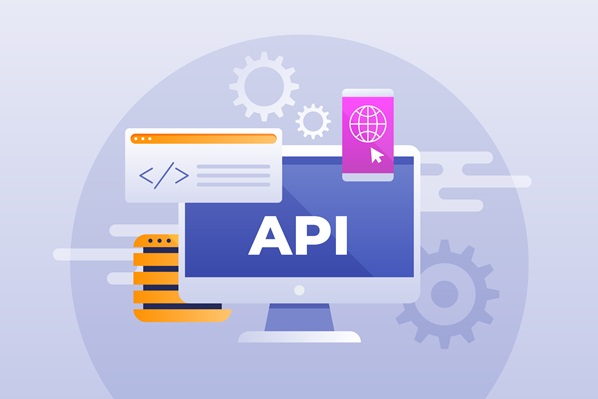
Automated API testing stands as a cornerstone in the modern software development cycle, ensuring that applications perform consistently and accurately across diverse systems and technologies. However, navigating through the intricacies of API testing presents a set of common challenges, from handling parameter combinations to ensuring the security and performance of APIs under different scenarios. By embracing strategic methodologies and advanced tools, teams can mitigate these issues, enhancing the reliability of their testing processes.
Despite the complexities, overcoming the hurdles in automated API testing is achievable through a comprehensive guide to API testing, which equips teams with the knowledge to identify potential pitfalls and apply best practices. Continuous learning and adaptation are essential, as the landscape of API technology is ever-evolving. A dedicated approach to testing can uncover vulnerabilities before they impact the end user, thereby streamlining the development process and delivering superior software products.
Key Takeaways
- API testing automation enhances application reliability.
- Strategic approaches mitigate common testing challenges.
- Ongoing adaptation is crucial in API testing landscapes.
Exploring API Testing Challenges
Automated API testing is vital for ensuring the reliability and performance of software systems. This section delves into the intricacies of various challenges faced during this process, offering insights into systematic solutions and methodologies implemented to address them.
Understanding the Scope of API Testing
API testing encompasses verifying the logic, security, performance, and reliability of APIs within different software ecosystems. A significant challenge arises in defining the scope, as determining the breadth and depth of test cases is crucial for effective validation without redundancy.
Authentication and Authorization Hurdles
Authentication and authorization form the linchpin of API security. Both functional and security testing must account for the complexities of authorization mechanisms. API security testing tools are often deployed to automate this process, though they must be adept at handling various security protocols.
Data Management and Validation
Test data management is a critical component, which requires handling diverse data types and parameter combinations. Additionally, the consistency and accuracy of data formatting across different platforms pose a substantial challenge in maintaining test quality.
Test Environment and Integration Issues
Creating a realistic test environment that can mimic production conditions involves virtualization and the use of emulators. Challenges in integration with existing systems can surface, making it essential for testing frameworks to be both robust and flexible.
Ensuring Test Coverage and Quality
High test coverage and quality assurance demand comprehensive test cases that reflect the API inventory and its growth. Functional testing must evolve in response to ever-changing requirements to ensure that new features and updates are consistently assessed.
Effectively Addressing Performance and Load
Evaluating an API’s performance and stability under varying levels of load is critical. Load testing and performance optimization require a focused approach to benchmarking and monitoring, ensuring that the API can handle real-world operations and stress.
Collaboration and Communication Among Teams
Effective communication and collaboration among development teams and stakeholders is essential for aligning testing objectives with business goals. Diverse teams must work in unison, often across various platforms, to streamline the API testing approach and reduce redundancies.
Adapting to Evolving API Ecosystems
The dynamic nature of API ecosystems requires an agile testing strategy. As APIs and platforms grow, flexible automated testing tools and a willingness to adapt to technological advancements are imperative to handle the expanding scope and scale of API testing.
Strategies to Overcome API Testing Challenges
Overcoming challenges in API testing requires strategic planning and the integration of effective tools and practices. The following strategies offer a roadmap to enhance the effectiveness and reliability of automated API testing.
Leveraging Automated Testing Tools and Frameworks
Choosing the right automated testing tools can significantly optimize the testing process, leading to a better ROI. Tools enable testers to create comprehensive, automated API test suites with minimal effort. These tools also support a variety of testing frameworks, making them adaptable to different testing needs.
Utilizing Virtualization for Efficient Testing
Virtualization and using emulators can create controlled testing environments that simulate real-world scenarios. This approach allows for more efficient testing by providing access to a holistic service delivery platform without the need for physical deployment, leading to quicker turnaround times and reduced costs.
Prioritizing Test Cases for Maximum Impact
Strategic prioritizing of test cases ensures that critical functionalities are tested first, maximizing test coverage with minimal test cases. Effective test case design should focus on business-critical paths to quickly identify potential disruptions and maintain high standards of software delivery.
Enhancing Collaboration and Workflow
Improving collaboration and communication among cross-functional teams is crucial for maximizing productivity in software development. Adopting tools and practices that promote better workflow can lead to improved understanding and execution across different departments involved in the API lifecycle.
Continuous Testing and Monitoring for Reliability
Implementing continuous testing and monitoring ensures that APIs remain reliable and effective over time. This approach not only helps detect issues early but also shortens the feedback loop, allowing teams to address problems before they impact the end user, thereby maintaining the stability of the API’s service delivery.
Conclusion
Automated API testing presents unique challenges, from dealing with language independence to ensuring a robust testing framework is in place. These challenges can hinder the testing process but with the right strategies, such as selecting core languages wisely and utilizing effective communication and collaboration tools, they can be surmounted. Practitioners should focus on maintaining an up-to-date API inventory, embracing automation where beneficial, and selecting suitable testing tools to ensure resilient and effective API testing. Through vigilance and strategic approaches, the obstacles to successful API testing can be transformed into opportunities for optimization and improvement.




